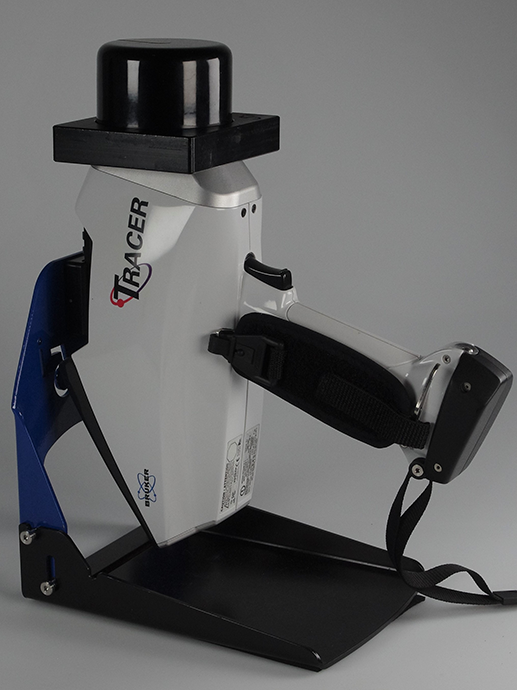The instrument uses a non-invasive analytical spot technique, where an X-ray beam interacts with a material and generates a unique set of secondary (or fluorescent) X-rays specific for a given chemical element. The energy of the secondary X-rays is registered by a detector, and plotted as a spectrum of intensity against energy values. The position of each peak identifies which element is present in the material, and the peak intensity gives an indication about the concentration.
The SciCult-KHM laboratory owns a portable instrument. It is widely used in the cultural heritage field given the measurements are non-destructive, and usually whole objects can be analyzed, without need of sampling. In addition, analysis can be performed directly in situ without moving the object.
XRF is accurate, fast, and can be used to analyze a broad range of materials, from metal artefacts to non-metallic materials such as ceramics and glass. This technique is considered a “surface analysis”, with the X-rays penetration depth being material dependent. If the analyzed surface is dirty, coated or corroded, the results could be misleading.
Instrument: Bruker HandheldTracer 5i, Rh X-ray tube
